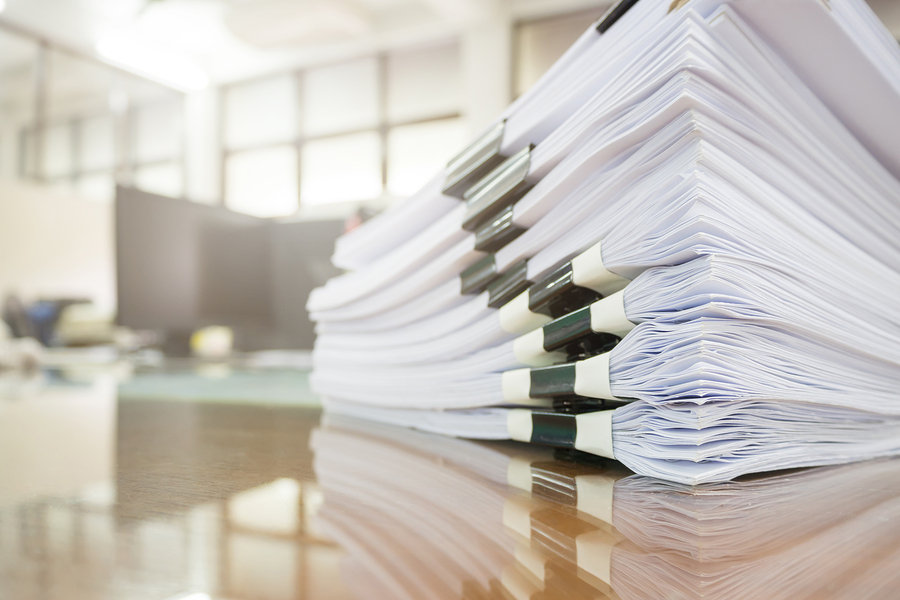The ‘paperless office’ was a dream of the late 20th century, when the promise of the digital era seemed like it could eliminate the need for hardcopies of just about everything.
While email is undoubtedly a gamechanging technology, it hasn’t completely removed the need to communicate on paper, and printer jams are as much a part of office life in 2018 as they were in 1998.
If anything, near-instant laser printing and wireless networked printers have made it more tempting than ever to ‘run off a hardcopy’ when it might not be strictly necessary.
All of this costs money in paper, toner and secure recycling services – so what can you do to cut down on all of those running costs?
1. Thinner sheets
The A4 printer paper found in most offices is around 80 gsm – that’s grams per square metre, a measure of the weight and, therefore, the thickness of the paper. You might have heavier paper, say around 120 gsm, for formal correspondence with premium clients.
But why use these weights for internal drafts and memos? You can get 60 gsm paper that will work just fine in most printers and for hand-written notes – although it may ‘bleed’ slightly with wet inks, but that’s no big deal for internal paperwork, and you’re saving 25% by weight with every sheet you use.
2. Use both sides
Paper has two sides, and by using both you can directly halve the number of sheets you need instantly, with almost zero effort.
Modern printers sometimes even have an auto duplex option that will feed the paper back through and print on the reverse automatically, so make sure this is switched on if possible.

3. Save it for scrap
Even if you can’t auto duplex when printing, you can save old print-outs and use the blank reverse side for handwritten notes, assuming there’s no major security concern with what’s on the printed side.
This has an added benefit – it cuts down on the number of reporters’ pads and spiral-bound notepads you get through, which can save even more money than just cutting down on loose leaf paper.
4. Throw it away flat
One way to keep your recycling bins emptier for longer, even without reducing the amount of paper you use, is to throw it away flat instead of scrunching it into a ball.
Office paper recycling bins often have a narrow slot to encourage leaving the sheets flat, while hiding the bin’s contents so there’s no associated security risk – whereas screwed-up balls trap air inside and between them, making much less efficient use of the space between bin collections.
5. Go paperless
That 20th century dream isn’t dead just yet. Why not make it your ambition for 2018 to use the absolute minimum amount of paper possible?
Avoid printing emails unnecessarily; avoid handouts when a digital slideshow will do the job in training sessions; encourage suppliers and clients to liaise digitally rather than in writing.
Identify any unique reasons why your business in particular uses paper, and think of solutions to overcome this; you’ll save on resources, keep your office free from strewn screwed-up sheets, and cut costs too.

